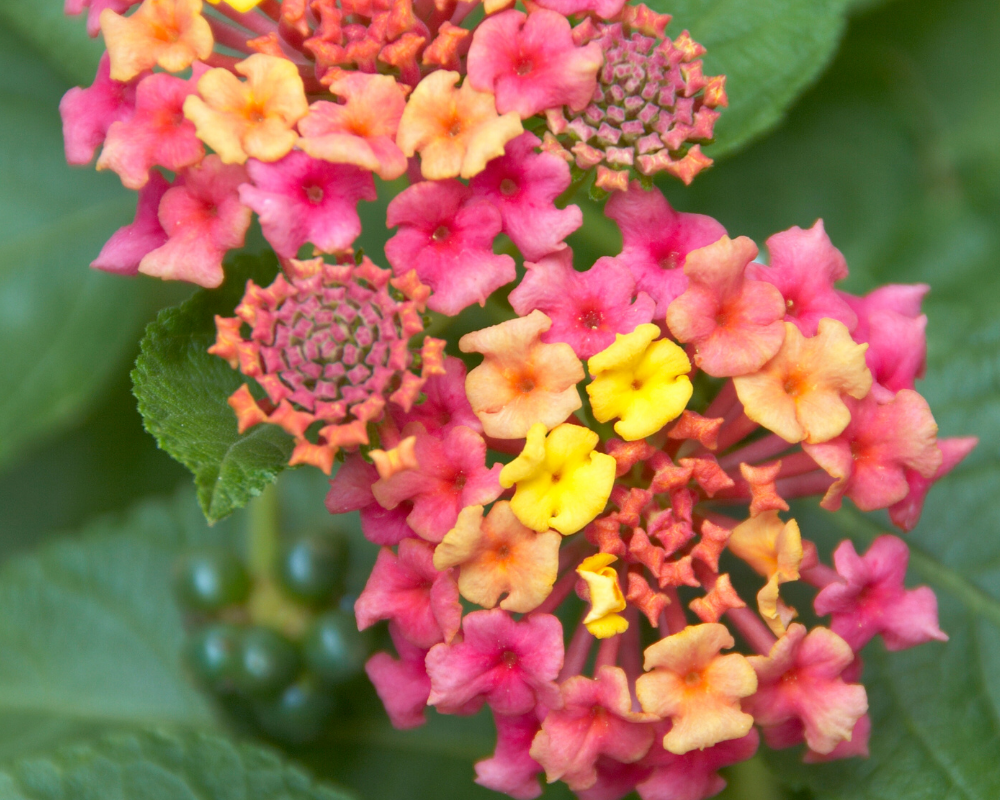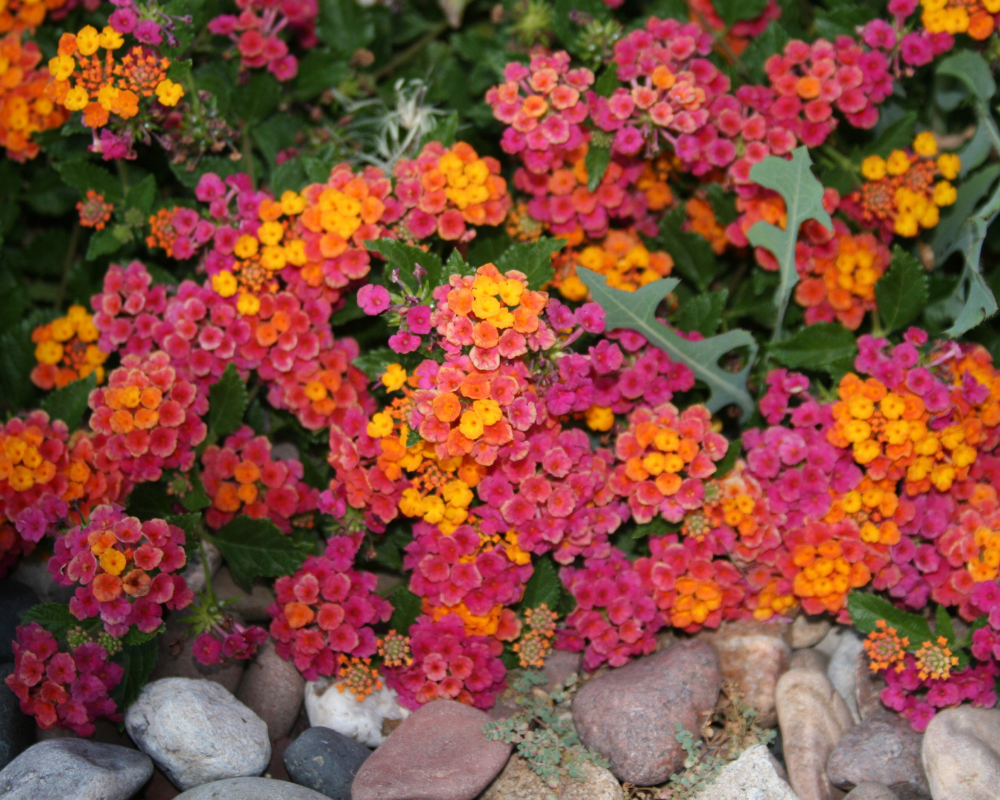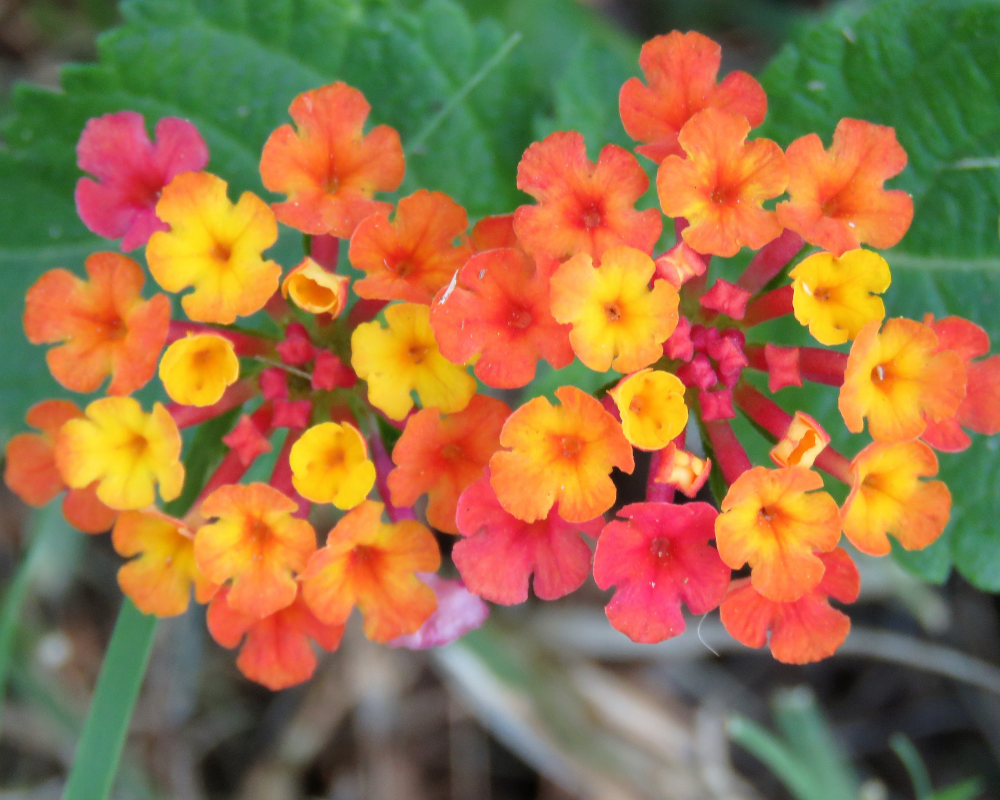Irene lantana is a very colorful evergreen perennial. Hues of yellow, pink and red blend create a gorgeous combo throughout each individual flower cluster. Whether you plant Irene lantana in containers or in the landscape, the result is a stunning effect. Lantana has a long blooming season and is one of a few perennials that can still put out a great display of blooms during our San Antonio summer heat. Today we are taking a look at the variety Irene.
Irene lantana (Lantana camara) is a non-native, non-sterile variety of lantana. To learn more about the differences between sterile and non-sterile lantanas and a list of some of the most popular varieties, I hope you’ll take a few minutes and read, “Lantana: Long-Flowering, Heat Tolerant Perennial”. The goal is to always try and provide you solid information so you are well-informed to make a solid decision when plant shopping.

Irene Lantana (Lantana camara) Quicklook
Classification: Woody Perennial
Average size: 2’-3’’ T x 4’ – 6’ W
Winter Hardiness: 28°F, may die back to roots (winter mulch helps protect)
Light Requirement: Full Sun for best blooms
Soil Preference: Well draining, no particular soil need
Water Requirement: Low Usage once established
Pests: Deer/Rabbit resistant, sometimes Lace bugs bother it
Disease Issues: None of great note
Bloom Period: Spring through fall
Bloom Color: Pink, Yellow, Red

More About Irene Lantana
Butterflies, moths, bees, hummingbirds and hummingbird moths are all interested in the nectar-filled flowers while birds head for the berries produced by Irene lantana. Deer and rabbits, on the other hand, tend to leave lantana alone. In fact, it has very few pests issues besides Lace bugs. (See our tips for preventing and treating Lace bugs here.)
When choosing where to plant your Irene lantana, soil quality is not of too much importance as long as it is well-draining. Lantana will not tolerate what we call “wet feet”. Wet feet is what happens when the soil isn’t able to drain water sufficiently for the requirements of the plant resulting in the roots of the plants rotting. Make sure you don’t plant in an area in the landscape where water pools or collects. Container planted lantana must have adequate drainage holes.
Irene lantana is actually somewhat drought tolerant once it has been established properly. In fact, lantana likes the heat, sunshine, and can even be planted where it receives reflected heat from driveways and sidewalks. It is still always recommended to offer supplemental irrigation in long periods of drought and hot weather.

Irene lantana spreads about twice as wide as it grows tall. (See specs above in the Quicklook section.) That makes this variety a choice for people who wish to fill in larger areas in perennial beds or an option for a line of shrubs. Irene lanta can look great in containers as well but choose one that is at least 3 gallons or larger to accommodate its size.
If you can wait to plant til the fall season (best) or early spring (next best), this will give these plants their best start. Trees, shrubs, and woody perennials like lantana, need as much time to get their roots established before summertime. This helps them skate through the heat without taking on a lot of damaging stress.
We generally carry multiple varieties of lantana at Rainbow Gardens to make choosing the perfect one to suit your needs very easy.
~ The Happy Gardener, Lisa Mulroy


I live in central NJ, 08560. Would Irene Lantana survive as a potted plant here?
Probably not. Lantana hardiness zone is 8-10 and new Jersey is 6a – 7b. And potted plants are generally less hardy. You could attempt to bring them in over winter to protect them from the cold, otherwise treat them as annuals in your area.